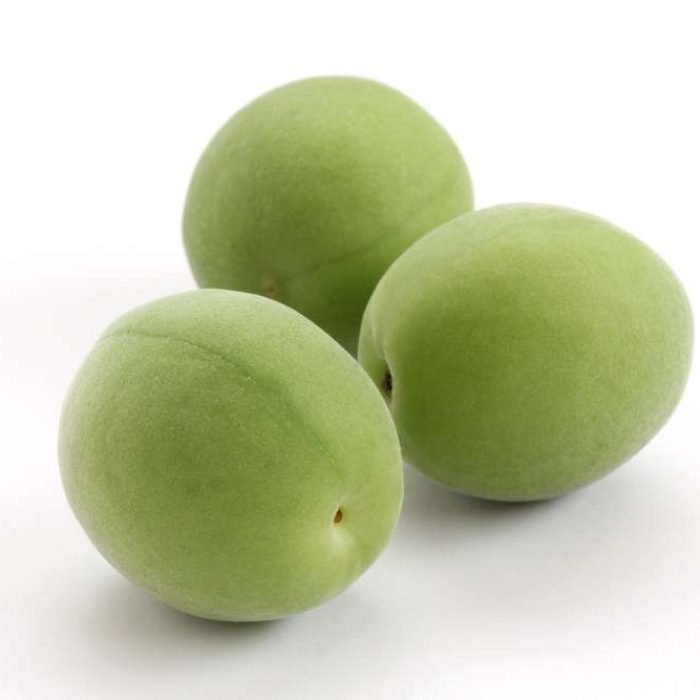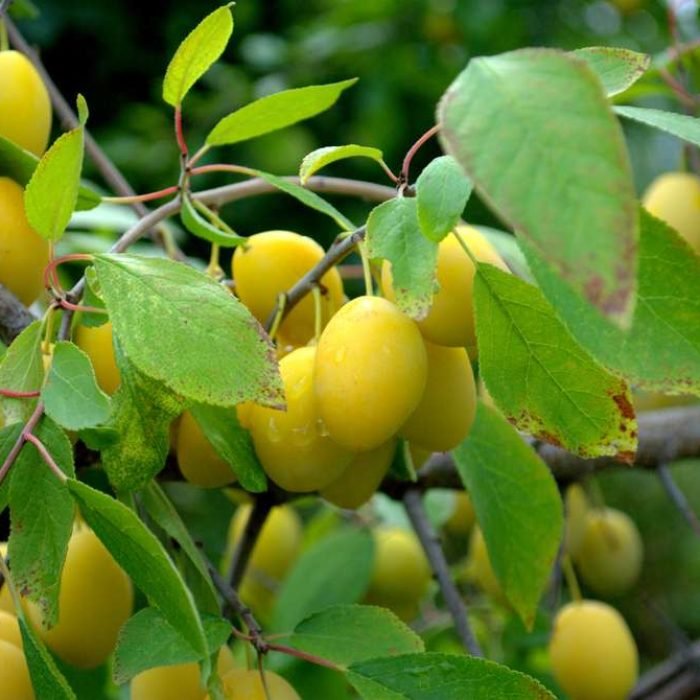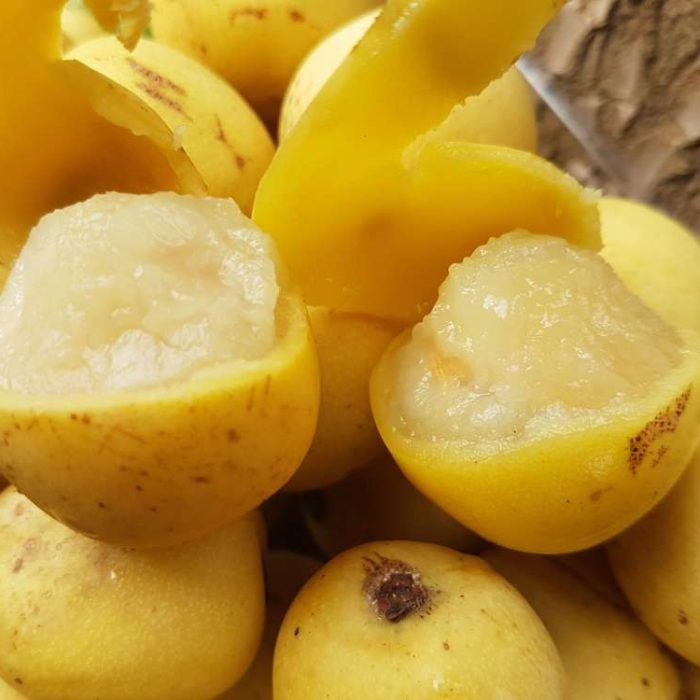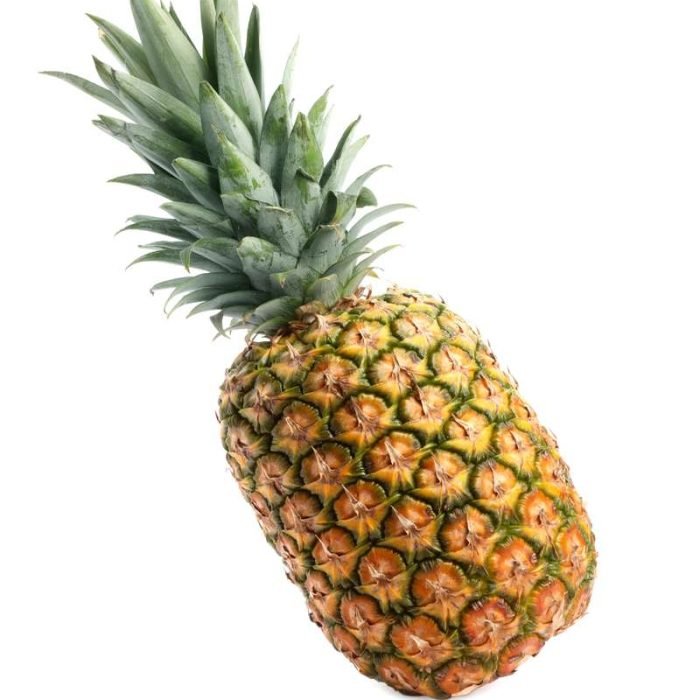Pomegranate
( Pomegranate )
- Punica granatum
- Tree Type: Deciduous

General Information
Botanically, the edible fruit is a berry with seeds and pulp produced from the ovary of a single flower. The fruit is intermediate in size between a lemon and a grapefruit, 5–12 cm (2–4+1⁄2 in) in diameter with a rounded shape and thick, reddish husk. In mature fruits, the juice obtained by compressing the seeds yields a sour flavor due to low pH (4.4) and high contents of polyphenols, which may cause a red indelible stain on fabrics. Primarily, the pigmentation of pomegranate juice results from the presence of anthocyanins and ellagitannins.Description
Red-purple in color, the pomegranate fruit husk has two parts: an outer, hard pericarp, and an inner, spongy mesocarp (white “albedo”), which comprises the fruit inner wall where seeds attach. Membranes of the mesocarp are organized as nonsymmetric chambers that contain seeds inside sarcotestas, which are embedded without attachment to the mesocarp. Containing juice, the sarcotesta is formed as a thin membrane derived from the epidermal cells of the seeds. The number of seeds in a pomegranate can vary from 200 to about 1,400.Cultivation
P. granatum is grown for its fruit crop, and as ornamental trees and shrubs in parks and gardens. Mature specimens can develop sculptural twisted-bark multiple trunks and a distinctive overall form. Pomegranates are drought-tolerant, and can be grown in dry areas with either a Mediterranean winter rainfall climate or in summer rainfall climates. In wetter areas, they can be prone to root decay from fungal diseases. They can tolerate moderate frost, down to about −12 °C (10 °F). Insect pests of the pomegranate can include the butterflies Virachola isocrates, Iraota timoleon, Deudorix epijarbas, and the leaf-footed bug Leptoglossus zonatus, and fruit flies and ants are attracted to unharvested ripe fruit.[19] Pomegranate grows easily from seed, but is commonly propagated from 25 to 50 cm hardwood cuttings to avoid the genetic variation of seedlings. Air layering is also an option for propagation, but grafting fails.Uses
As intact sarcotestas or juice, pomegranates are used in baking, cooking, juice blends, meal garnishes, smoothies, and alcoholic beverages, such as cocktails and wine. Dried pomegranate seeds, found in some natural specialty food markets, still contain some residual water, maintaining a natural sweet and tart flavor. Dried seeds can be used in several culinary applications, such as trail mix, granola bars, or as a topping for salad, yogurt, or ice cream. In the Caucasus, pomegranate is used mainly for juice. In Azerbaijan, a sauce from pomegranate juice narsharab, (from Persian: (a)nar + sharab, lit. “pomegranate wine”) is usually served with fish or tika kabab. Turkish lamb chops with candied figs and herbed mashed potatoes, garnished with pomegranate In Turkey, pomegranate sauce (Turkish: nar ekşisi) is used as a salad dressing, to marinate meat, or simply to drink straight. Pomegranate seeds are also used in salads and sometimes as garnish for desserts such as güllaç. Pomegranate syrup or molasses is used in muhammara, a roasted red pepper, walnut, and garlic spread popular in Syria and Turkey. In Greece, pomegranate is used in many recipes, including kollivozoumi, a creamy broth made from boiled wheat, pomegranates, and raisins, legume salad with wheat and pomegranate, traditional Middle Eastern lamb kebabs with pomegranate glaze, pomegranate eggplant relish, and avocado-pomegranate dip. Pomegranate is also made into a liqueur, and as a popular fruit confectionery used as ice cream topping, mixed with yogurt, or spread as jam on toast. In Mexico, they are commonly used to adorn the traditional dish chiles en nogada, representing the red of the Mexican flag in the dish which evokes the green (poblano pepper), white (nogada sauce) and red (pomegranate seeds) tricolor.Share:
- Kingdom: Plantae
- Clade 1: Tracheophytes
- Clade 2: Angiosperms
- Clade 3: Eudicots
- Clade 4: Rosids
- Order: Myrtales
- Family: Lythraceae
- Genus: Punica







